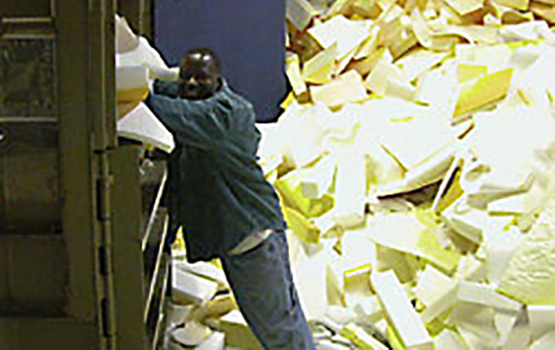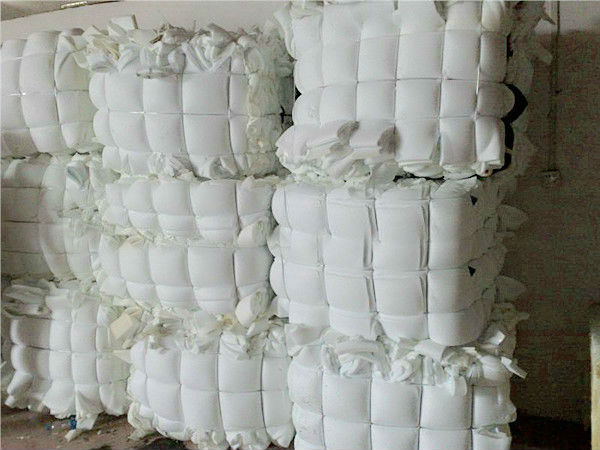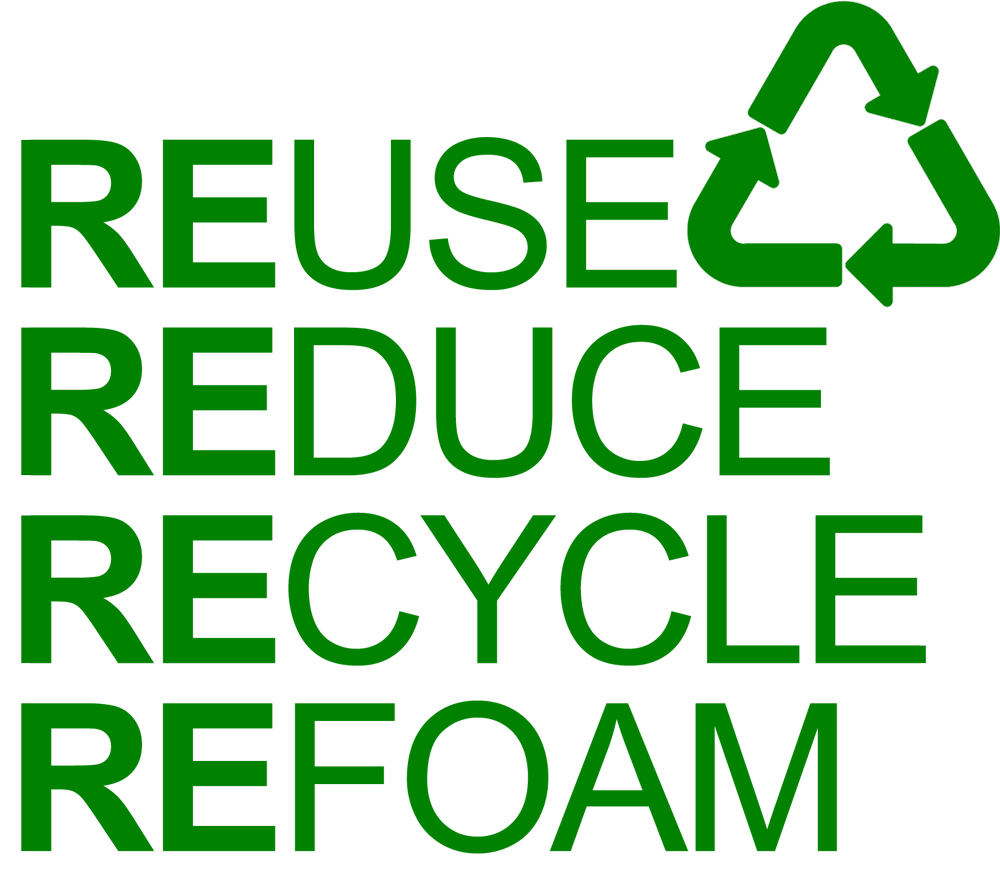Page Summary
- Foam is recycled and provides environmental benefits that spring mattress units don’t.
- Large amounts of foam are bailed into smaller manageable bundles.
- The scrap foam is then shredded down and joined together to make carpet underlay.
- Other scrap foam is mixed with fibre and converted into stuffing for pillows, toys and furniture backs.
Foam Scrap is Reusable
Recycling is hardly a new concept but often a difficult one to realize. Many materials are difficult to recycle. Some simply don’t produce a valuable recycled material. Others are difficult to collect and transport. Polyurethane foam however is being recycled and providing environmental benefits across North America.
Up to 30 percent of all foam can become scrap after cutting and shaping foam in product fabrication. Without recycling this would be a costly disposal problem for foam manufacturers. However, with the development of practical end uses for scrap foam, almost every piece of scrap is recyclable.
Preparing Scrap For Sale
Large amounts of scrap can be packaged using balers, such as the one shown above. The foam is compressed many times to reduce its size. Bales are easier to handle and help keep the transportation costs down. The only requirements for the scrap are that it should be new foam, dry and free of any foreign materials or objects.


